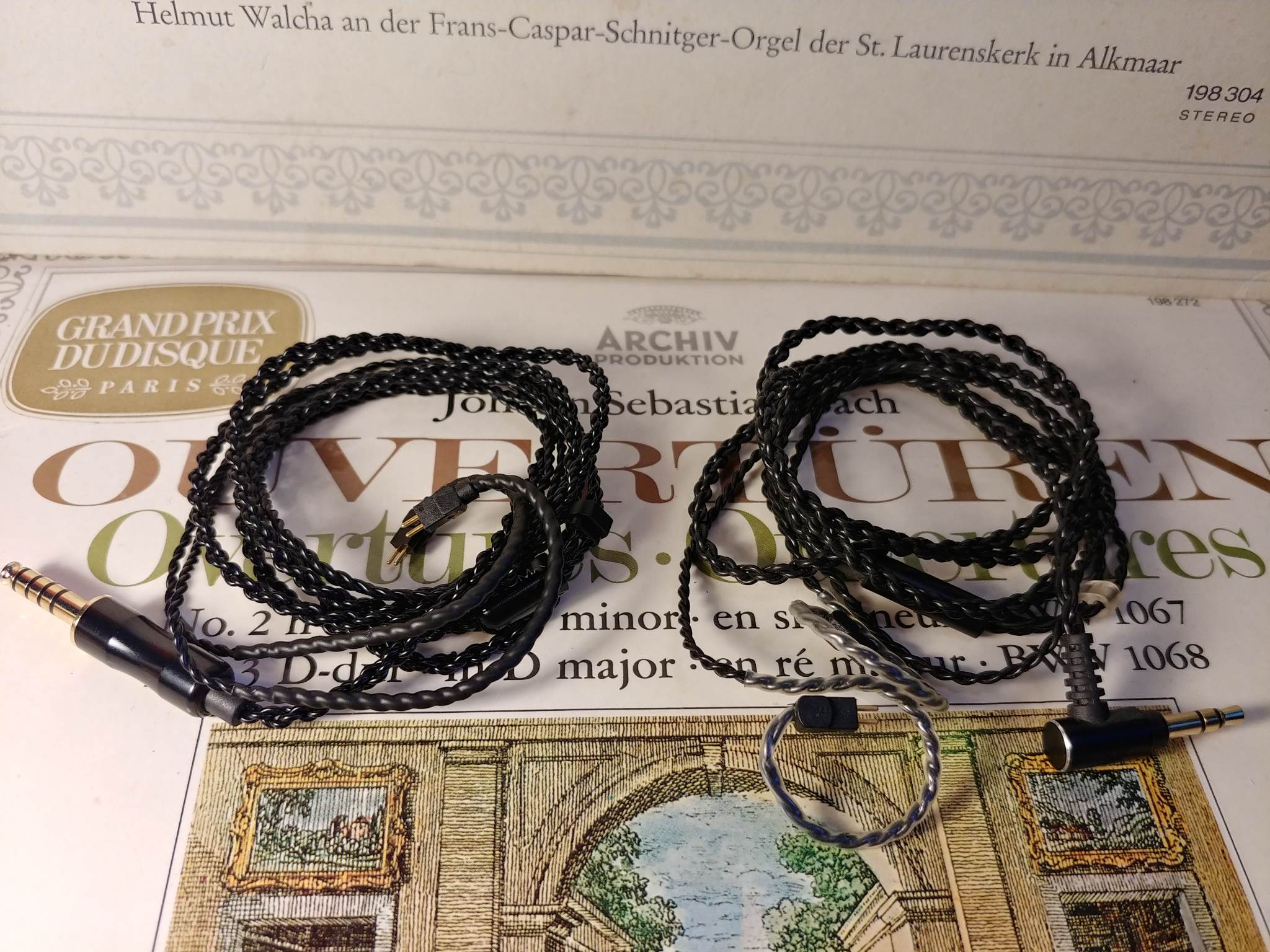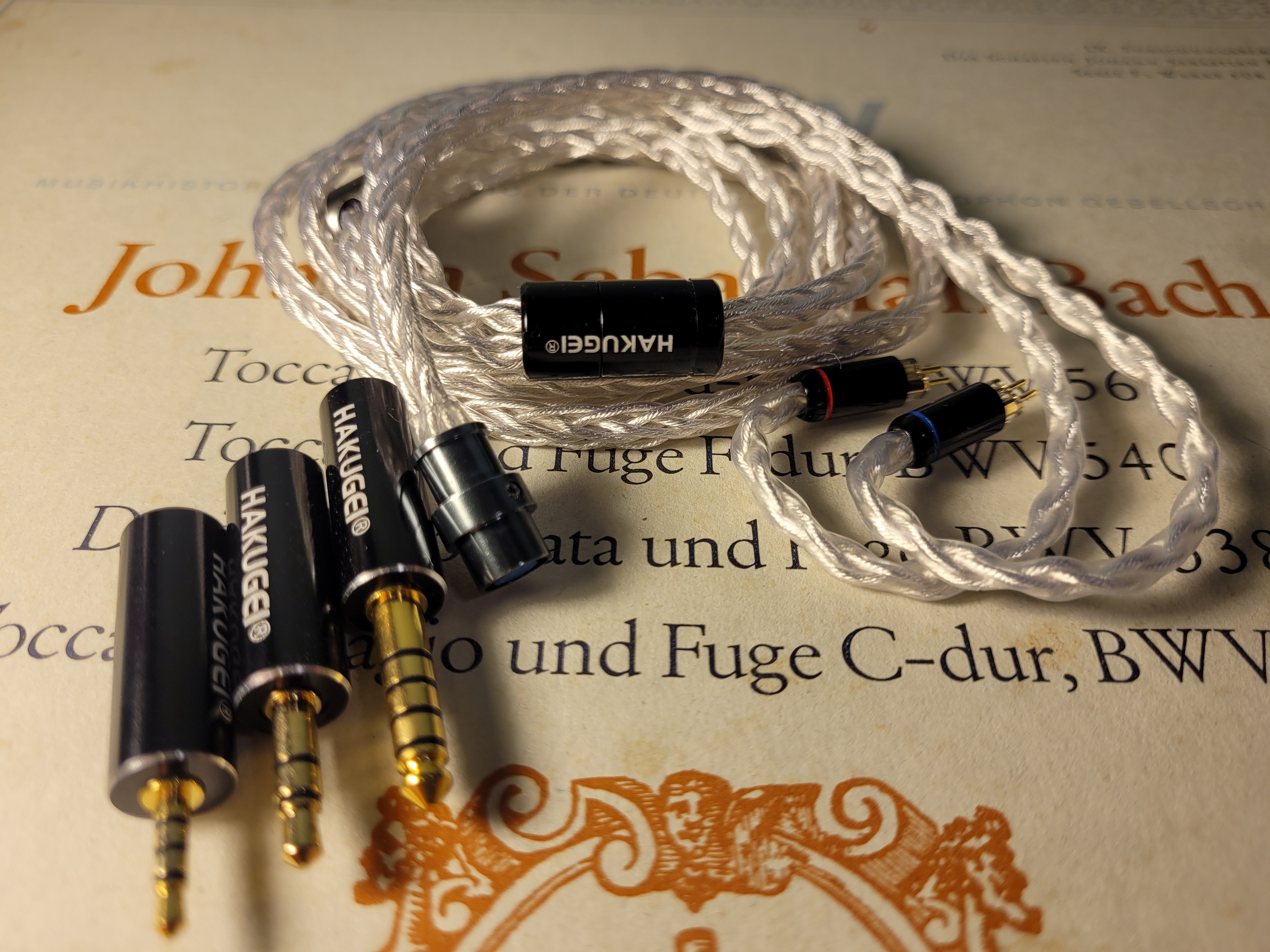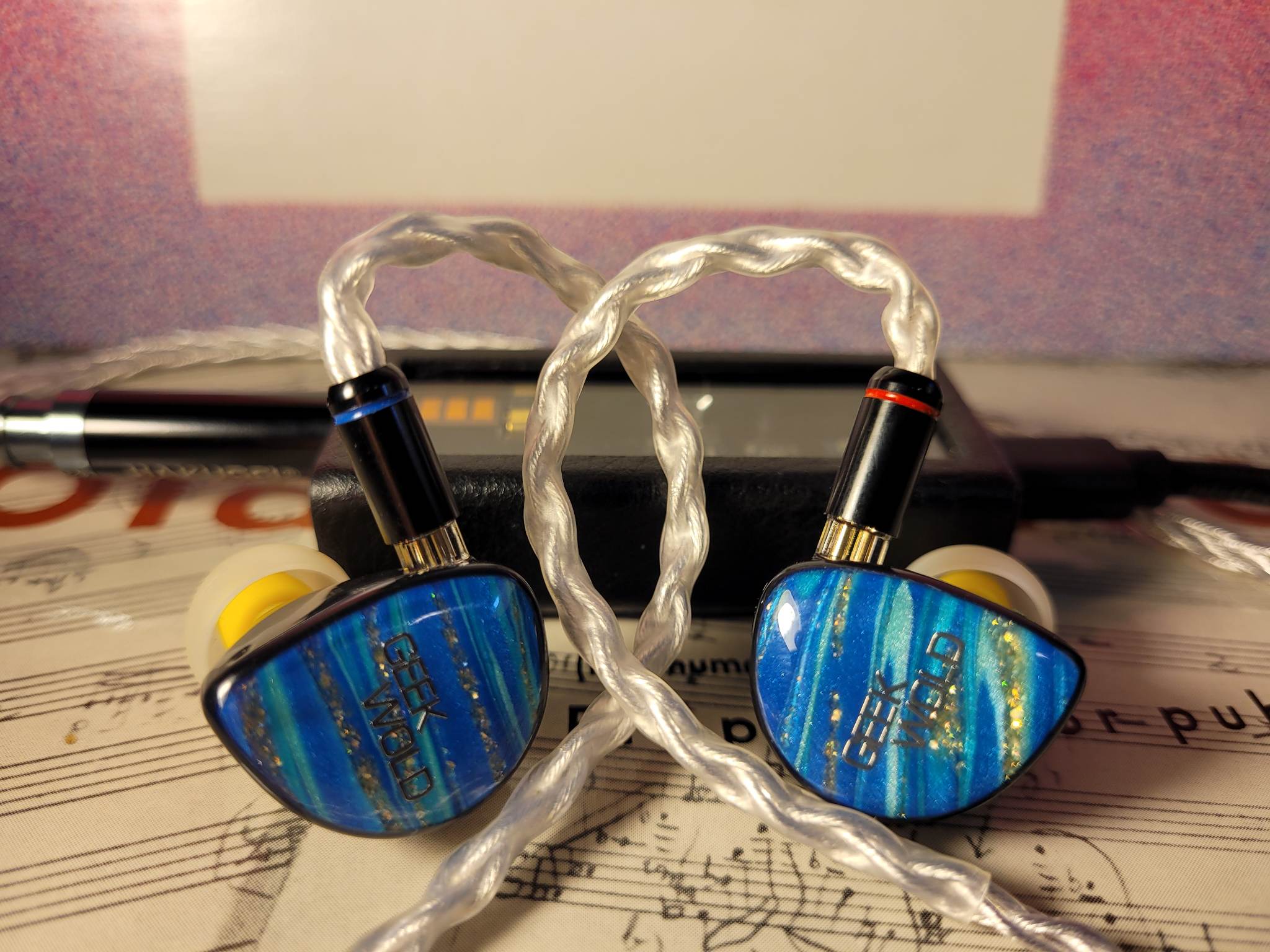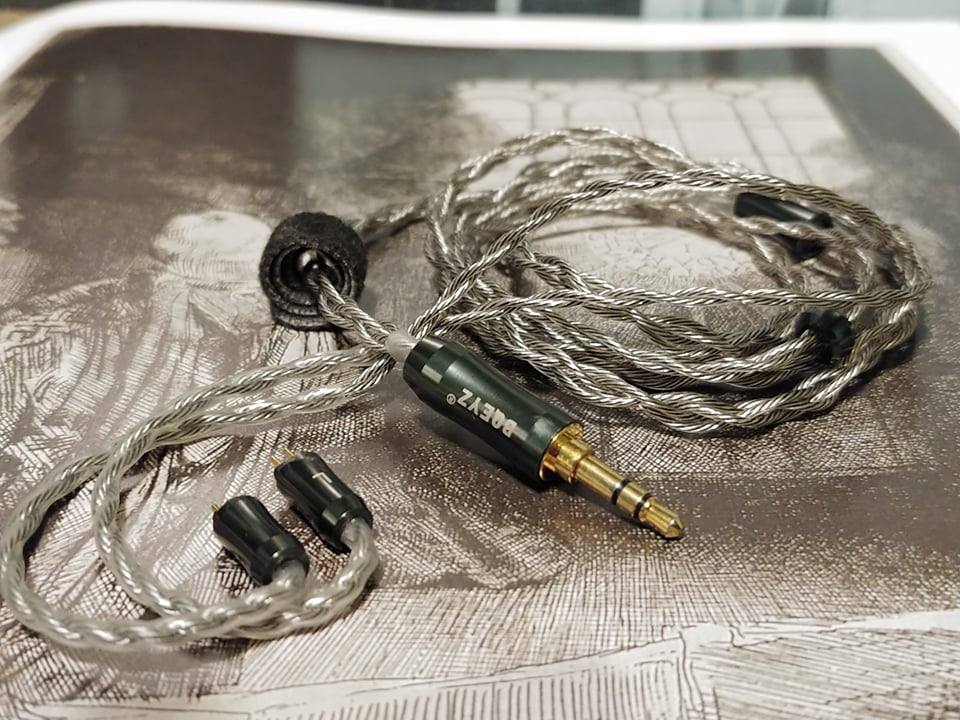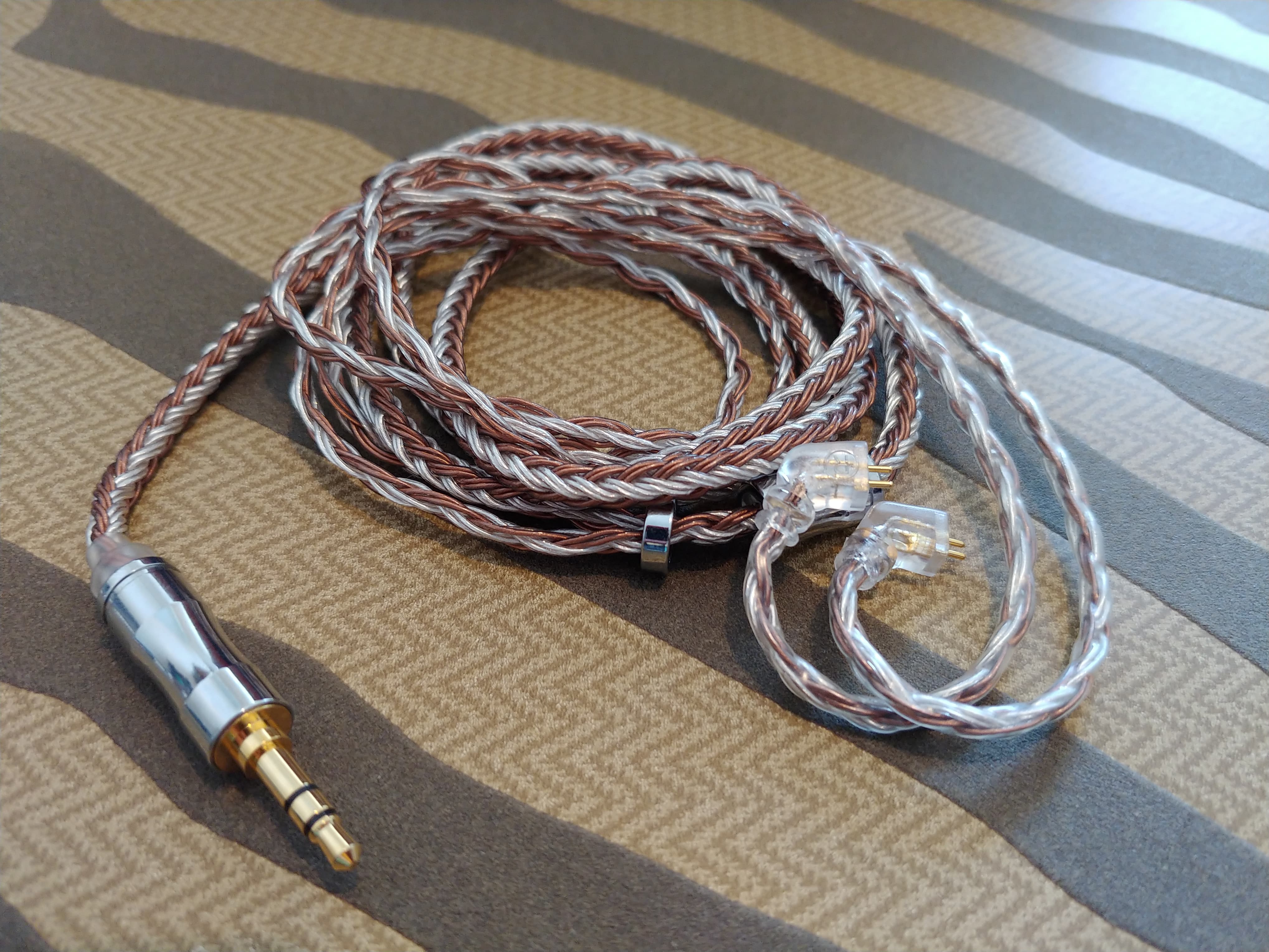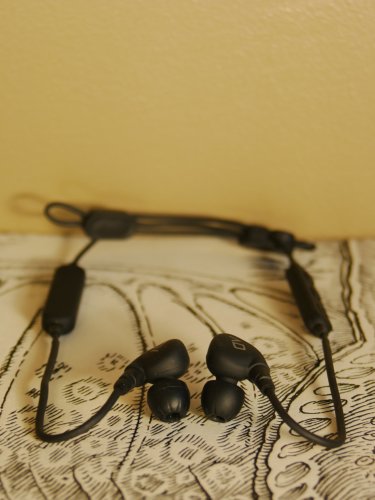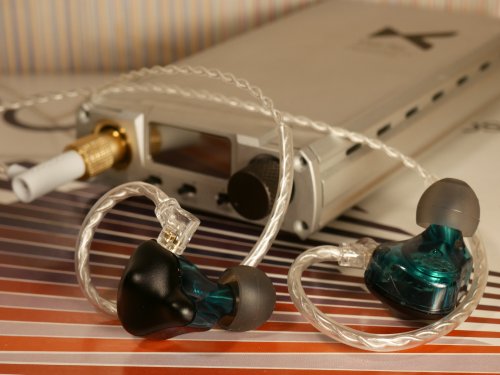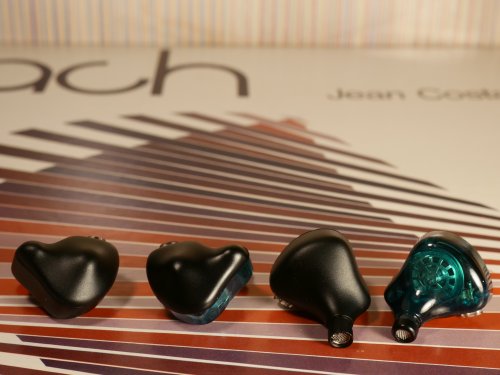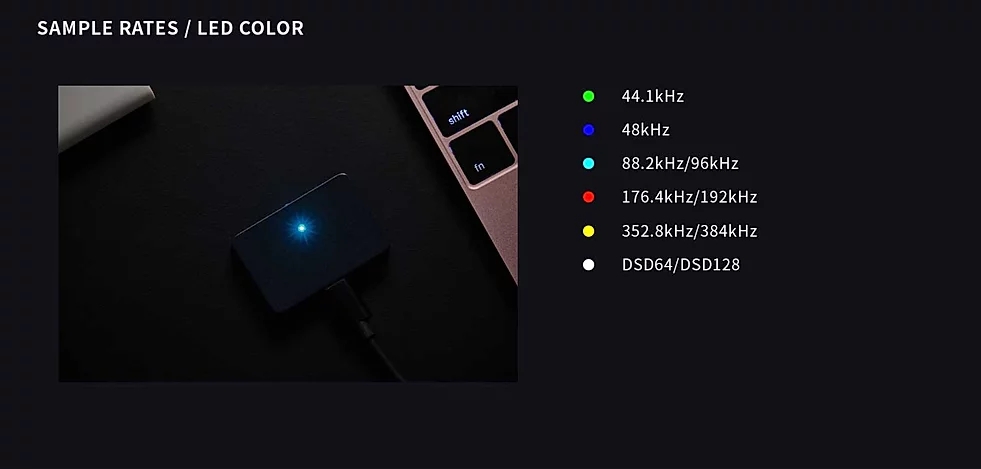BQEYZ SPRING1 REVIEW :

SOUND: 9.5/10
CONSTRUCTION: 9/10
DESIGN: 8.5/10
ACCESSORIES: 9/10
VALUE: 10/10
It’s rare that I find some ‘’chi-fi’’ company to be underated, because lot of them like KZ and TRN are in fact overhyped.
BQEYZ is the exception and its a shame they do not get as much attention as other bigger chinese companies because they really stand appart in term of quality of sound AND construction. This company really take their time to design and tune the iem they make and unlike other mass production company like KZ, they do not use conterfeit housing design or cheap balanced armature make by other. Nope, they create they own audio drivers wich explain why the creation of SPRING1 take more than a year to achieve.
Apart from the Spring1, I own the 2DD+3BA’s hybrid BQ3 (68$) and the 2DD+1BA hybrid KB100 (50$) wich sound both excellent for the price and have unique personalities. With both of them, I did not encounter serious tuning problem like peaky upper mids or highs, or sloppy bass, or grainy artificial timbre, in fact, for once I can say it was professionally tuned and offer balanced musicality. As well, the superb construction stand appart from the sub-100$ iem market. This admiration for their previous models put the bar very high for the expectation I have about their flagship model that sell for 140$.

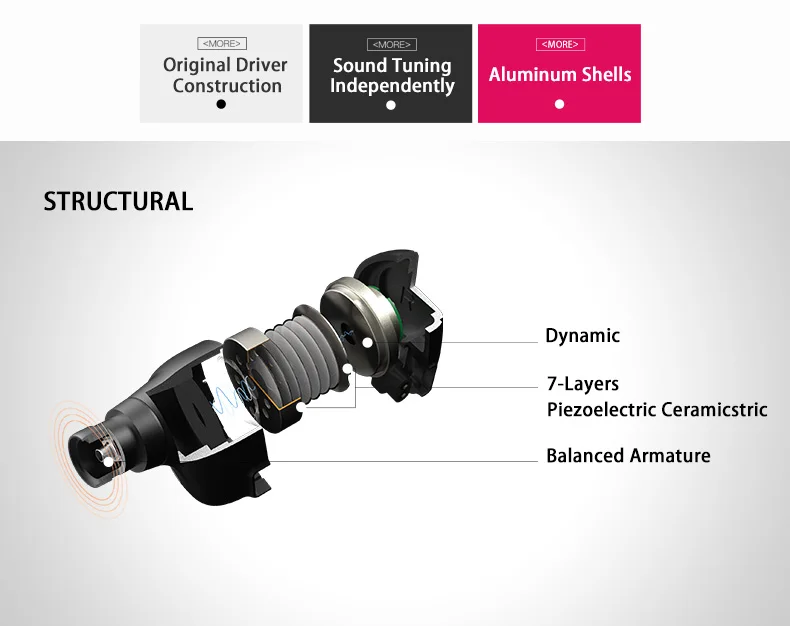
BQEYZ patent their own special driver for the Spring1, its a unibody dynamic drivers with a 7 layers piezo, all put in one piece so the transient response sound natural. That alone is a little audio revolution, and offer way better audio performance than the cheap piezoelectric drivers used independantly for treble response. Yes, its fromanother league than the NiceHCK NX7 or **** **** in term of cohesive tuning and treble richness. If you were afraid that the Spring1 sound metallic, artificial or trebly, you can be reassure that they offer an high definition natural sound. As well, the customize balanced armature created by BQEYZ have nothing to envy to great BA like the Knowles, in fact, the region it cover is splendid to listen and way better than bellsin or sonion BA’s.
Yes, BQEYZ deserve more respect and recognition, they are serious audiophile earphones company with talented audio engineer that have a refined unique vision about sound rendering. With the Spring1, I think they try to make the sound as much revealing as comfortable to listen to, wich is a very hard task. How can we make an earphones sound lively, exciting, very revealing and offer a lush musicality that will not sound too agressive or unbalanced?? Let’s see in this review if its possible to achieve such a fascinating musicality.
You can buy the Spring1 directly from BQEYZ Ali express store HERE
DISCLAIMER: Some audio company sincerly fascinate me, BQEYZ is one of them, so I follow closely the creation of the Spring1 since the first day. I ask so much question that I finally got the chance to have a review sample wich I accept with humility. I wanna thanks BQEYZ to not put pressure on reviewing and letting my objectivity being intact of any expectation. This review is as honnest as it can be.

INFO&SPECS :
1. Item:Spring 1
2. Dynamic Driver: 13mm
3. Impedance: 43Ω
4. Sensitivity: 108dB
5. Frequency: 7-40KHz
6. Cable Length: 1.2m
7. Pin Type: 0.78mm-2 Pin
8. Plug Type: 3.5mm
9. Driver units: 13mm Coaxial dynamic driver+7 Layers piezo electric+Balanced armature
9. Mic: Without
10. Color: Black / Blue (Optional)
ACCESSORIES, CONSTRUCTION & DESIGN :



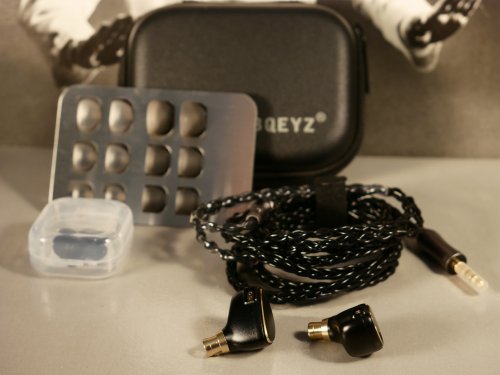
ACCESSORIES included are well presented in a very enjoyable unboxing experience, wich is the more serious presentation of BQEYZ line up. Yes, we are in flagship territory, and one thing that proof it is the excellent 8 cores Silver plated cable that is included. Its thick, super sturdy and very beautifull. This type of cable alone should be priced between 30-50$ and is a very welcome addition to the excellently built 2pin earphones. As well, we have a generous amount of eartips, wich include 6pairs of silicone eartips and a pair of memory foam tips. If it wasn’t enough, we have too a nice sturdy protective case. Can we ask for more? Nope, not at this price.




CONSTRUCTION is excellent, metal used is so light yet thick and well polished that some will think its half plastic with back metal plate. Nope, just hit the housing togheter, the noise will reassure you : this is all metal housing. As well, the nozzle is metal too, and quite long. All in all, the SPRING1 promise long durability and have excellent craftmanship with great attention to details.

The 8cores silver plated cable is sumptuous too, and extremely sturdy. After 2 months of use i did not encounter any quality check issue like i do with IKKO or Tinaudio T3 cable were the 2pin or mmcx metal cover unglue suddenly. This cable is a keeper and I use it with multiple earphones including the Spring1.

DESIGN of housing is quite chunky, with an oval near triangular shape and a thick long nozzle similar to the KZ ZS10PRO. I did struggle a little to find the right fit because if I use too long eartips even medium size became too big to be push enough deep in my ears. I finally use wide bore eartips included with the Spring1. Even if i can wear these very long, i don’t consider them as the most comfortable iem I own due to quite chunky body.
ISOLATION is excellent and do great work for passive noise cancelation, as well, due tothe venting hole being in front of housing, the noise leakage is very minimal and will not be a problem in silent environment.

DRIVEABILITY isn’t the most easy at 43ohm impendance and 108db sensitivity, very powerfull DAP like the Ibasso DX90 will drive them properly, but other loess powerfull one like Xduoo X3 will lack power and affect soundstage and dynamic attack. I suggest using either a seriously powerfull DAP or portable AMP with the Spring1, otherwise you will not hear their full potential.
SOUND :
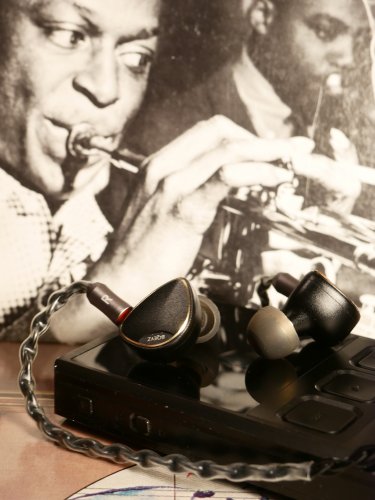
SUBJECTIVE SOUND APPRECIATION is sincerly overwhelmingly positive and that, since the very first day -once I find the right fit- with Spring1. This is grand sounding iem that can’t let indifferent anybody. It have a unique W shape soundsignature thats polished on top. The mid range blow my mind with its thick textured timbre and superb imaging. Bass is fast, thick and very authoritative. Treble never sound artificial. Whatever I throw to the Spring1 gain in lushness and attack, as if it can ressurect musicality of lifeless track by extracting extra textured and presence from 1khz to 10khz. This iem is extremely versatile because it have it all : bass, mids, highs. If I crave my head for a music style that will sound not as much spectacular than other it will be trap rap where sub kick need more rumble and transparency….but I don’t really listen to this style. For me, the Spring1 is surely the very best sub-150$ iem money can buy in term of versatility, definition and rich musicality.
SOUNDSTAGE is sincerly something special with the Spring1, extremely wide and quite tall and deep until bass stole some deepness to it. It have an intense outof your head spaciality, with holographic feel I rarely if ever encounter with any other iem. This really is the type of earphones that have the magic of a full size headphones.
IMAGING is incredibly accurate and sharp, space between instrument is wide and clear, again, only big bass line can stole some spot on definition because it will cover the black background. With well mastered music with lot of spacial acoustic phenomenon, the Spring1 give me spectacular accuracy in disposition of sounds layers I rarely if ever live, this was extremely immersive presentation with panoramic 3D like feel. This type of grand magnificated imaging isn’t expected in sub-200$ price range.
CLARITY is from another league here, and have sharp emphasis in midrange and treble, delivering effortless details up to upper highs. Bass being less transparent than mid and highs, it can stole some lower mids attack definition, but never to the point we feel its completely veiled, in fact, this type of thick opaque bass stay in the back of all this super clear mids and highs, so, it only stole some space and air to natural instrument decay. We aren’t in cold analytical or metallic clarity here, more so in lush hyper realist one.
TIMBRE is thick, textured, and well rounded. It sound at the same time natural and super colorfull, and have a mix of opaque bass, transparent mid range and crisp treble. Slightly bright, but carefully polished.
LOWER BASS is quite thick and opaque, slightly dry and very weighty. To my ears, its the only part of audio spectrum that do not sound natural and effortless. Its very present and benifit from extra clarity in music with lot of instruments ,so we can hear sub bass line perfectly, but the extra energy in 50-100hz section make it roaring instead of rumbling, as if it struggle to move air but compensate it with extra thickness in timbre and attack. Still, as said, its tigh and controled and very clear, just that the natural extension up to 20hz isn’t feel and lack transparence.
MID BASS is fast, weighty, natural and well textured, the punch is full and juicy with good impact that do not feel too fowarded or forced. Unlike lower bass, transient response is more accurate and let the soundwaves move naturally. Transition to lower mid range is organic and add extra thickness to overall timbre. Cello sound marvellously bodied and lower piano note have good weight and impact.
MID RANGE is something precious with the Spring1, its so revealing and fully covered with high level of subtle details one would think its overly bright, analytical or cold, but no, its lushly natural sounding too and exempt from any harsh peaks or sibilance. Whatever the type of music I play, it will show me all instrument textures with magnified singularities, no instrument will fight against each other for presence but instead they will have their own lush presence in wide accurate imaging and play togheter in rich harmony. Vocal are as thick and detailed as violin or piano, keeping their natural presence. It’s among the best vocal I heard even if they aren’t pushed foward, the timbre is so well rendered I ‘’believe’’ their life like rendition, most of all, male and female vocal will sound as good and full bodied. Electric guitar too will be gently crunchy and textured, never thin or artificial sounding even if they keep a minimal amount of transparency like all other instruments.
TREBLE is another miracle with the Spring1 and could only be achieve with this special dual piezo dynamic driver patented by BQEYZ. Unlike other piezo electric iem I try, their no metallic highs, grainy texture or trebly peak with those, its near organic in fact, but lush and ultra detailed in lower-mid treble too. This type of treble remind me the one of Final Audio E serie, but to a next level in term of clarity and texture. Acoustic guitar sound incredible with the Spring1, it have extra brilliance and rich sharpness but not alot of decay, just enough so the attack can be fast and accurate to permit other instrument sounding clear as well. Percussions stay in the back, wich is how I like it if they are super clear and realist, wich is exactly what the Spring1 deliver.
SUB BASS : 7.5/10
MID BASS : 8.5/10
MID RANGE : 9/10
TREBLE : 9/10
TIMBRE : 8.5/10
CLARITY : 9/10
SOUNDSTAGE : 9.5/10
IMAGING : 9/10
RANDOM TRACKS TESTING :
DOMINIC MILLER ‘’Absinthe’’
The languid accordeon solo in the begining have very appealing clarity that emphase nicely the texture, tonal accuracy is outstanding and micro details of finger pressing the keys is delicately rendered. After, the acoustic guitar came, again with high level of clarity, beautifull crispness and control decay, until all instruments come togheter naturally, effortlessly, in a super wide coherent spaciality that take full advantage of crystal clear mid range imaging. Bass line are perfectly articulate, thick and opaque in the back, while accordeon keep a beautifull floating transparency and guitar in the center play its line sharply. Kick drum and percussions are well separeted like all other instrument, kick staying at your left while percussions move from left to right corner. Texture of brush drumming is superbly rendered, sweetly textured, again very natural and life like. Now, a synth line is add to this fourtet, its light, transparent, as if a new wooly layers was insert between guitar and drum. The guitar have as much presence than accordeon and do not sound too metallic or decayed, level of balance in sound is extremely refined and tend to benifit from clarity as anything mix togheter. Attack of all instrument is energic yet never shouty or artificial, it give push to liveliness and presence in a flat way.
MACHINEFABRIEK ‘’III (with Peter broderick)
Wow, what an audio experience! The soundstage is just gigantic and ultra holographic with this track, background is perfectly black too, big sub kick hit very hard, thick, opaque, super weighty and thigh with fast rumble. Layers of female and males voices have extremely accurate spacial placement and this is quite a psychadelic experience! Clarity of imaging is jaw dropping, we have a mix of layers transparency and specific spaciality that never fail to sound as if you wear very big full-size open headphones (but with closed back bass when it occur). Even at the end of the track when we have an overwhelming amount of very textured male and female voices line, the Spring1 keep its layerings definition detailed and transparent.
COMPARAISONS :
VS IKKO OH1 (140$) :

The OH1 is an excellent 1DD+1 knowles BA hybrid earphones and the audiophile do not overhype them because they deserve the praise they have. Construction is more eye appealing than the Spring1, but both share thick metal housing. OH1 is notably larger while Spring1 is thicker, offering about both same level of comfort, but as the nozzle is less long and tichk than Spring1, i can use long silicone eartips with the OH1.
SOUNDSTAGE is wider, taller and more holographic with the Spring1 while the OH1 have a little more deepnest to it.
IMAGING is more intimate and minimalist with the OH1, as if the bass and highs are better separated and mid range is opaque and lack space between instrument, here the Spring1 have near the opposite imaging approach, where whole mid range is extremely well articulated and separeted and the bass and highs stay layered in the back.
BASS is more emphased with the OH1 and have better separated sub bass wich is thick, clear and very well define but make the mid bass punch a little shadowed and can warm lower mid range, the Spring1 have less rumble in sub bass, wich is thick, dry and opaque but quite fast, the mid bass have more weight and better definition.
MID RANGE is brighter, thinner and less textured with the OH1, this is really where the sword hit, because Spring1 mid range is richer and more accurate, it cover full 1khz-8khz range without notable dip and offer better instrument separation too. OH1 can be hot in upper mids, wich the Spring1 do not encounter, but the biggest difference is in timbre and weight, as we can hear with piano.
TREBLE is similar with those too, but again, i find the Spring1 more natural and fuller sounding, percussions have more weight while the OH1 is more about cripsness but struggle to dig as much details than Spring1.
All in all, the OH1 is like a more bassy Spring1 with more agressive mids and less rich timbre.
VS BRAINWAVZ B400 (150$) :

Now, let’s see how a 4 balanced armature can compare to the Spring1.
Construction of B400 is ridiculous and quite fragile, but as its smaller and lighter it is more comfortable than Spring1.
SOUNDSTAGE is way wider with the Spring1, and about the same deep. IMAGING is from another league with the Spring1, while the B400 have an intimate layerings that feel stock in your head the Spring1 have wide holographic spaciality with clearer separation.
BASS is notably rolled off after 50hz with the B400, its warm, soft in slam and rapid in mid bass attack that lack weight and body, Spring1 have more thumping bass, wich dig lower and have more texture to it.
MID RANGE is warmer, thiner and lack in attack and weight compared to more textured, detailed and energic one of Spring1. Even if B400 are mid centric, it sound dark compared to Spring1 here, the vocal have perhaps more emphasis but they lack texture in timbre.
TREBLE is again more rolled off with B400, with all its emphasis in lower treble, wich can make the sound feel unbalanced compared to more linear frequency response of Spring1 that offer crisper and more controled highs.
All in all, B400 sound less balanced, darker, lifeless and less refined than the excellent Spring1.
CONCLUSION :

BQEYZ Spring1 is an exceptional earphones with a grand musicality that never stop to impress me with its versatile accuracy. The richness of timbre is mesmerizing for its price as well as high level of details up to 12khz. To produce a sound with such weight in attack that keep its layering clean of congestion is really a tuning miracle wich is surely due to the incredible piezo-dynamic driver used with the balanced armature.
I can’t find any fault with this iem, should it be in construction, design or sound, it really make alive whole frequencies range without making it feel forced or sound artificial.
If you only listen to electronic with lot of sub bass rumble, perhaps this will impress you in a less overwhelming way than me, but for all other music style like jazz, classical, pop, rock, IDM, R&B, folk, metal etc, the Spring1 will make your ears see in the dark.
I can’t recommend those iem enough, and consider them the very best sub-200$ iem I ever try.

SOUND: 9.5/10
CONSTRUCTION: 9/10
DESIGN: 8.5/10
ACCESSORIES: 9/10
VALUE: 10/10
It’s rare that I find some ‘’chi-fi’’ company to be underated, because lot of them like KZ and TRN are in fact overhyped.
BQEYZ is the exception and its a shame they do not get as much attention as other bigger chinese companies because they really stand appart in term of quality of sound AND construction. This company really take their time to design and tune the iem they make and unlike other mass production company like KZ, they do not use conterfeit housing design or cheap balanced armature make by other. Nope, they create they own audio drivers wich explain why the creation of SPRING1 take more than a year to achieve.
Apart from the Spring1, I own the 2DD+3BA’s hybrid BQ3 (68$) and the 2DD+1BA hybrid KB100 (50$) wich sound both excellent for the price and have unique personalities. With both of them, I did not encounter serious tuning problem like peaky upper mids or highs, or sloppy bass, or grainy artificial timbre, in fact, for once I can say it was professionally tuned and offer balanced musicality. As well, the superb construction stand appart from the sub-100$ iem market. This admiration for their previous models put the bar very high for the expectation I have about their flagship model that sell for 140$.


BQEYZ patent their own special driver for the Spring1, its a unibody dynamic drivers with a 7 layers piezo, all put in one piece so the transient response sound natural. That alone is a little audio revolution, and offer way better audio performance than the cheap piezoelectric drivers used independantly for treble response. Yes, its fromanother league than the NiceHCK NX7 or **** **** in term of cohesive tuning and treble richness. If you were afraid that the Spring1 sound metallic, artificial or trebly, you can be reassure that they offer an high definition natural sound. As well, the customize balanced armature created by BQEYZ have nothing to envy to great BA like the Knowles, in fact, the region it cover is splendid to listen and way better than bellsin or sonion BA’s.
Yes, BQEYZ deserve more respect and recognition, they are serious audiophile earphones company with talented audio engineer that have a refined unique vision about sound rendering. With the Spring1, I think they try to make the sound as much revealing as comfortable to listen to, wich is a very hard task. How can we make an earphones sound lively, exciting, very revealing and offer a lush musicality that will not sound too agressive or unbalanced?? Let’s see in this review if its possible to achieve such a fascinating musicality.
You can buy the Spring1 directly from BQEYZ Ali express store HERE
DISCLAIMER: Some audio company sincerly fascinate me, BQEYZ is one of them, so I follow closely the creation of the Spring1 since the first day. I ask so much question that I finally got the chance to have a review sample wich I accept with humility. I wanna thanks BQEYZ to not put pressure on reviewing and letting my objectivity being intact of any expectation. This review is as honnest as it can be.

INFO&SPECS :
1. Item:Spring 1
2. Dynamic Driver: 13mm
3. Impedance: 43Ω
4. Sensitivity: 108dB
5. Frequency: 7-40KHz
6. Cable Length: 1.2m
7. Pin Type: 0.78mm-2 Pin
8. Plug Type: 3.5mm
9. Driver units: 13mm Coaxial dynamic driver+7 Layers piezo electric+Balanced armature
9. Mic: Without
10. Color: Black / Blue (Optional)
ACCESSORIES, CONSTRUCTION & DESIGN :




ACCESSORIES included are well presented in a very enjoyable unboxing experience, wich is the more serious presentation of BQEYZ line up. Yes, we are in flagship territory, and one thing that proof it is the excellent 8 cores Silver plated cable that is included. Its thick, super sturdy and very beautifull. This type of cable alone should be priced between 30-50$ and is a very welcome addition to the excellently built 2pin earphones. As well, we have a generous amount of eartips, wich include 6pairs of silicone eartips and a pair of memory foam tips. If it wasn’t enough, we have too a nice sturdy protective case. Can we ask for more? Nope, not at this price.




CONSTRUCTION is excellent, metal used is so light yet thick and well polished that some will think its half plastic with back metal plate. Nope, just hit the housing togheter, the noise will reassure you : this is all metal housing. As well, the nozzle is metal too, and quite long. All in all, the SPRING1 promise long durability and have excellent craftmanship with great attention to details.

The 8cores silver plated cable is sumptuous too, and extremely sturdy. After 2 months of use i did not encounter any quality check issue like i do with IKKO or Tinaudio T3 cable were the 2pin or mmcx metal cover unglue suddenly. This cable is a keeper and I use it with multiple earphones including the Spring1.

DESIGN of housing is quite chunky, with an oval near triangular shape and a thick long nozzle similar to the KZ ZS10PRO. I did struggle a little to find the right fit because if I use too long eartips even medium size became too big to be push enough deep in my ears. I finally use wide bore eartips included with the Spring1. Even if i can wear these very long, i don’t consider them as the most comfortable iem I own due to quite chunky body.
ISOLATION is excellent and do great work for passive noise cancelation, as well, due tothe venting hole being in front of housing, the noise leakage is very minimal and will not be a problem in silent environment.

DRIVEABILITY isn’t the most easy at 43ohm impendance and 108db sensitivity, very powerfull DAP like the Ibasso DX90 will drive them properly, but other loess powerfull one like Xduoo X3 will lack power and affect soundstage and dynamic attack. I suggest using either a seriously powerfull DAP or portable AMP with the Spring1, otherwise you will not hear their full potential.
SOUND :

SUBJECTIVE SOUND APPRECIATION is sincerly overwhelmingly positive and that, since the very first day -once I find the right fit- with Spring1. This is grand sounding iem that can’t let indifferent anybody. It have a unique W shape soundsignature thats polished on top. The mid range blow my mind with its thick textured timbre and superb imaging. Bass is fast, thick and very authoritative. Treble never sound artificial. Whatever I throw to the Spring1 gain in lushness and attack, as if it can ressurect musicality of lifeless track by extracting extra textured and presence from 1khz to 10khz. This iem is extremely versatile because it have it all : bass, mids, highs. If I crave my head for a music style that will sound not as much spectacular than other it will be trap rap where sub kick need more rumble and transparency….but I don’t really listen to this style. For me, the Spring1 is surely the very best sub-150$ iem money can buy in term of versatility, definition and rich musicality.
SOUNDSTAGE is sincerly something special with the Spring1, extremely wide and quite tall and deep until bass stole some deepness to it. It have an intense outof your head spaciality, with holographic feel I rarely if ever encounter with any other iem. This really is the type of earphones that have the magic of a full size headphones.
IMAGING is incredibly accurate and sharp, space between instrument is wide and clear, again, only big bass line can stole some spot on definition because it will cover the black background. With well mastered music with lot of spacial acoustic phenomenon, the Spring1 give me spectacular accuracy in disposition of sounds layers I rarely if ever live, this was extremely immersive presentation with panoramic 3D like feel. This type of grand magnificated imaging isn’t expected in sub-200$ price range.
CLARITY is from another league here, and have sharp emphasis in midrange and treble, delivering effortless details up to upper highs. Bass being less transparent than mid and highs, it can stole some lower mids attack definition, but never to the point we feel its completely veiled, in fact, this type of thick opaque bass stay in the back of all this super clear mids and highs, so, it only stole some space and air to natural instrument decay. We aren’t in cold analytical or metallic clarity here, more so in lush hyper realist one.
TIMBRE is thick, textured, and well rounded. It sound at the same time natural and super colorfull, and have a mix of opaque bass, transparent mid range and crisp treble. Slightly bright, but carefully polished.
LOWER BASS is quite thick and opaque, slightly dry and very weighty. To my ears, its the only part of audio spectrum that do not sound natural and effortless. Its very present and benifit from extra clarity in music with lot of instruments ,so we can hear sub bass line perfectly, but the extra energy in 50-100hz section make it roaring instead of rumbling, as if it struggle to move air but compensate it with extra thickness in timbre and attack. Still, as said, its tigh and controled and very clear, just that the natural extension up to 20hz isn’t feel and lack transparence.
MID BASS is fast, weighty, natural and well textured, the punch is full and juicy with good impact that do not feel too fowarded or forced. Unlike lower bass, transient response is more accurate and let the soundwaves move naturally. Transition to lower mid range is organic and add extra thickness to overall timbre. Cello sound marvellously bodied and lower piano note have good weight and impact.
MID RANGE is something precious with the Spring1, its so revealing and fully covered with high level of subtle details one would think its overly bright, analytical or cold, but no, its lushly natural sounding too and exempt from any harsh peaks or sibilance. Whatever the type of music I play, it will show me all instrument textures with magnified singularities, no instrument will fight against each other for presence but instead they will have their own lush presence in wide accurate imaging and play togheter in rich harmony. Vocal are as thick and detailed as violin or piano, keeping their natural presence. It’s among the best vocal I heard even if they aren’t pushed foward, the timbre is so well rendered I ‘’believe’’ their life like rendition, most of all, male and female vocal will sound as good and full bodied. Electric guitar too will be gently crunchy and textured, never thin or artificial sounding even if they keep a minimal amount of transparency like all other instruments.
TREBLE is another miracle with the Spring1 and could only be achieve with this special dual piezo dynamic driver patented by BQEYZ. Unlike other piezo electric iem I try, their no metallic highs, grainy texture or trebly peak with those, its near organic in fact, but lush and ultra detailed in lower-mid treble too. This type of treble remind me the one of Final Audio E serie, but to a next level in term of clarity and texture. Acoustic guitar sound incredible with the Spring1, it have extra brilliance and rich sharpness but not alot of decay, just enough so the attack can be fast and accurate to permit other instrument sounding clear as well. Percussions stay in the back, wich is how I like it if they are super clear and realist, wich is exactly what the Spring1 deliver.
SUB BASS : 7.5/10
MID BASS : 8.5/10
MID RANGE : 9/10
TREBLE : 9/10
TIMBRE : 8.5/10
CLARITY : 9/10
SOUNDSTAGE : 9.5/10
IMAGING : 9/10
RANDOM TRACKS TESTING :
DOMINIC MILLER ‘’Absinthe’’
The languid accordeon solo in the begining have very appealing clarity that emphase nicely the texture, tonal accuracy is outstanding and micro details of finger pressing the keys is delicately rendered. After, the acoustic guitar came, again with high level of clarity, beautifull crispness and control decay, until all instruments come togheter naturally, effortlessly, in a super wide coherent spaciality that take full advantage of crystal clear mid range imaging. Bass line are perfectly articulate, thick and opaque in the back, while accordeon keep a beautifull floating transparency and guitar in the center play its line sharply. Kick drum and percussions are well separeted like all other instrument, kick staying at your left while percussions move from left to right corner. Texture of brush drumming is superbly rendered, sweetly textured, again very natural and life like. Now, a synth line is add to this fourtet, its light, transparent, as if a new wooly layers was insert between guitar and drum. The guitar have as much presence than accordeon and do not sound too metallic or decayed, level of balance in sound is extremely refined and tend to benifit from clarity as anything mix togheter. Attack of all instrument is energic yet never shouty or artificial, it give push to liveliness and presence in a flat way.
MACHINEFABRIEK ‘’III (with Peter broderick)
Wow, what an audio experience! The soundstage is just gigantic and ultra holographic with this track, background is perfectly black too, big sub kick hit very hard, thick, opaque, super weighty and thigh with fast rumble. Layers of female and males voices have extremely accurate spacial placement and this is quite a psychadelic experience! Clarity of imaging is jaw dropping, we have a mix of layers transparency and specific spaciality that never fail to sound as if you wear very big full-size open headphones (but with closed back bass when it occur). Even at the end of the track when we have an overwhelming amount of very textured male and female voices line, the Spring1 keep its layerings definition detailed and transparent.
COMPARAISONS :
VS IKKO OH1 (140$) :

The OH1 is an excellent 1DD+1 knowles BA hybrid earphones and the audiophile do not overhype them because they deserve the praise they have. Construction is more eye appealing than the Spring1, but both share thick metal housing. OH1 is notably larger while Spring1 is thicker, offering about both same level of comfort, but as the nozzle is less long and tichk than Spring1, i can use long silicone eartips with the OH1.
SOUNDSTAGE is wider, taller and more holographic with the Spring1 while the OH1 have a little more deepnest to it.
IMAGING is more intimate and minimalist with the OH1, as if the bass and highs are better separated and mid range is opaque and lack space between instrument, here the Spring1 have near the opposite imaging approach, where whole mid range is extremely well articulated and separeted and the bass and highs stay layered in the back.
BASS is more emphased with the OH1 and have better separated sub bass wich is thick, clear and very well define but make the mid bass punch a little shadowed and can warm lower mid range, the Spring1 have less rumble in sub bass, wich is thick, dry and opaque but quite fast, the mid bass have more weight and better definition.
MID RANGE is brighter, thinner and less textured with the OH1, this is really where the sword hit, because Spring1 mid range is richer and more accurate, it cover full 1khz-8khz range without notable dip and offer better instrument separation too. OH1 can be hot in upper mids, wich the Spring1 do not encounter, but the biggest difference is in timbre and weight, as we can hear with piano.
TREBLE is similar with those too, but again, i find the Spring1 more natural and fuller sounding, percussions have more weight while the OH1 is more about cripsness but struggle to dig as much details than Spring1.
All in all, the OH1 is like a more bassy Spring1 with more agressive mids and less rich timbre.
VS BRAINWAVZ B400 (150$) :

Now, let’s see how a 4 balanced armature can compare to the Spring1.
Construction of B400 is ridiculous and quite fragile, but as its smaller and lighter it is more comfortable than Spring1.
SOUNDSTAGE is way wider with the Spring1, and about the same deep. IMAGING is from another league with the Spring1, while the B400 have an intimate layerings that feel stock in your head the Spring1 have wide holographic spaciality with clearer separation.
BASS is notably rolled off after 50hz with the B400, its warm, soft in slam and rapid in mid bass attack that lack weight and body, Spring1 have more thumping bass, wich dig lower and have more texture to it.
MID RANGE is warmer, thiner and lack in attack and weight compared to more textured, detailed and energic one of Spring1. Even if B400 are mid centric, it sound dark compared to Spring1 here, the vocal have perhaps more emphasis but they lack texture in timbre.
TREBLE is again more rolled off with B400, with all its emphasis in lower treble, wich can make the sound feel unbalanced compared to more linear frequency response of Spring1 that offer crisper and more controled highs.
All in all, B400 sound less balanced, darker, lifeless and less refined than the excellent Spring1.
CONCLUSION :

BQEYZ Spring1 is an exceptional earphones with a grand musicality that never stop to impress me with its versatile accuracy. The richness of timbre is mesmerizing for its price as well as high level of details up to 12khz. To produce a sound with such weight in attack that keep its layering clean of congestion is really a tuning miracle wich is surely due to the incredible piezo-dynamic driver used with the balanced armature.
I can’t find any fault with this iem, should it be in construction, design or sound, it really make alive whole frequencies range without making it feel forced or sound artificial.
If you only listen to electronic with lot of sub bass rumble, perhaps this will impress you in a less overwhelming way than me, but for all other music style like jazz, classical, pop, rock, IDM, R&B, folk, metal etc, the Spring1 will make your ears see in the dark.
I can’t recommend those iem enough, and consider them the very best sub-200$ iem I ever try.


 .
.
















